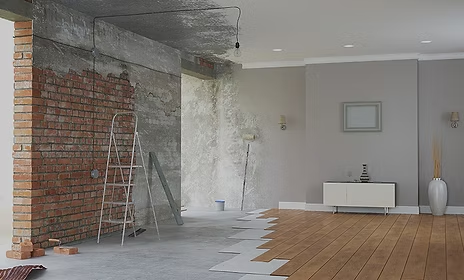Public buildings are the cornerstones of our communities—libraries, schools, town halls, community centers, public housing, and government offices. They’re meant to be safe, accessible spaces for everyone. But when mold enters the picture, that sense of safety disappears.
The reality is this: mold in public buildings is a hidden but serious health threat, and too often it’s ignored until it becomes a legal, financial, or medical crisis. If you manage or maintain a city- or county-owned facility, now is the time to get ahead of the issue—not after complaints roll in.
The Hidden Nature of Mold in Government Facilities
Mold doesn’t make noise. It doesn’t always have a smell. It grows slowly, often in wall cavities, ceilings, under flooring, or inside HVAC systems. In aging buildings or structures with deferred maintenance, moisture issues go unnoticed until someone gets sick—or the building fails an inspection.
Common risk factors include:
- Roof leaks or outdated roofing materials
- Old plumbing and uninsulated pipes
- Poor ventilation in bathrooms, basements, and janitorial closets
- Damp crawlspaces or foundation seepage
- mproper HVAC maintenance and duct condensation
- Post-flood or storm damage left untreated
Bay Area cities like Oakland, Richmond, San Leandro, and San Jose have many mid-century and older civic buildings. These often have flat roofs, limited air circulation, and patchwork repairs—all of which make mold more likely.
Mold Isn’t Just a Building Problem—It’s a Health One
When mold is present in public facilities, the effects are felt by:
- Employees and staff: Chronic coughing, headaches, fatigue, and worsening asthma
- Visitors and the public: Vulnerable populations such as seniors, children, and the immuno compromised are especially at risk
- Maintenance workers: Prolonged exposure during repairs or cleaning without proper PPE
- Local governments: Liability for workplace safety violations, ADA accessibility complaints, tenant lawsuits, and worker’s comp claims
Mold exposure lawsuits are rising, especially in public schools and housing authorities. What starts as a few missed maintenance tickets can quickly turn into front-page headlines.
The Importance of Routine Mold Inspection in Public Buildings
Routine inspections aren’t just a nice-to-have—they’re a frontline defense. At Bay Area Mold Pros, we’ve worked with city agencies and public facilities across the region to develop smart, proactive strategies.
What we check during a routine mold inspection:
- Moisture levels in walls, floors, ceilings, and HVAC
- Crawlspaces and attics for hidden mold or water damage
- Air sampling to detect elevated mold spore counts
- Surface swab testing in high-risk or complaint areas
- Review of known problem zones (bathrooms, kitchens, etc.)
We also help facilities teams understand which areas need immediate attention and which can be addressed during routine maintenance.
And because I don’t sell remediation services, you get 100% honest, independent results—no pressure, no upsell, just facts.
Mold Complaints: How to Respond the Right Way
If you receive a mold complaint from a public building employee or resident, don’t delay or downplay it. Even if there’s no visible mold, it’s your responsibility to investigate.
Steps to take:
1. Acknowledge the concern in writing and set expectations for inspection.
2. Schedule a certified mold inspection to assess the situation (preferably by an independent third party).
3. Document everything—locations, symptoms, photos, moisture readings, air sample results.
4. Communicate findings transparently with staff or tenants.
5. Remediate professionally and test again before re-occupying the space.
A swift, transparent, science-based response protects both your building and your reputation.
How to Build a Mold Prevention Plan for Your Public Facility
If you’re overseeing multiple buildings, mold prevention should be baked into your annual operations—not something that waits for a complaint. Here’s how to start:
1. Baseline Testing
Have each property tested once to establish a benchmark of air quality and moisture levels.
2. Maintenance Integration
Ensure HVAC filters, duct cleaning, and humidity control are part of your seasonal maintenance checklist.
3. Water Incident Protocols
Any water damage (from leaks, flooding, or plumbing issues) should trigger a moisture check and mold testing within 48 hours.
4. Staff Training
Train janitorial and facilities staff to identify early mold signs (discoloration, odors, damp materials) and report them properly.
5. Annual Mold Inspection
Especially in older buildings or those with past water damage. These inspections can prevent thousands in remediation later.
Why Work with a Certified Mold Inspector
I’m Rick Bruce, and I’ve been inspecting Bay Area buildings for over a decade. My job isn’t to scare you—it’s to give you the facts and help you protect your people and property.
I’ve worked with:
- City halls
- Schools and public libraries
- Housing authorities
- Nonprofit and state-run offices
- Public works and transportation depots
You’ll get lab-backed data, detailed reports, and the clarity your maintenance teams need to act confidently.
Serving Public Buildings Throughout the Bay Area
From Santa Clara to Contra Costa, Alameda to San Mateo, Bay Area Mold Pros is here to support your facility—discreetly, professionally, and with your public responsibility in mind.
Call (650) 762-6228 or visit https://bayareamoldpros.com to schedule your inspection or discuss a prevention plan.
Final Word: Mold Prevention Is Public Safety
Public buildings should uplift the community—not silently harm it. Mold doesn’t need to be a disaster waiting to happen. With regular inspections, smart planning, and honest assessments, you can keep your facilities healthy and safe for everyone who walks through the door.
Be proactive. Be transparent. Protect your people.









